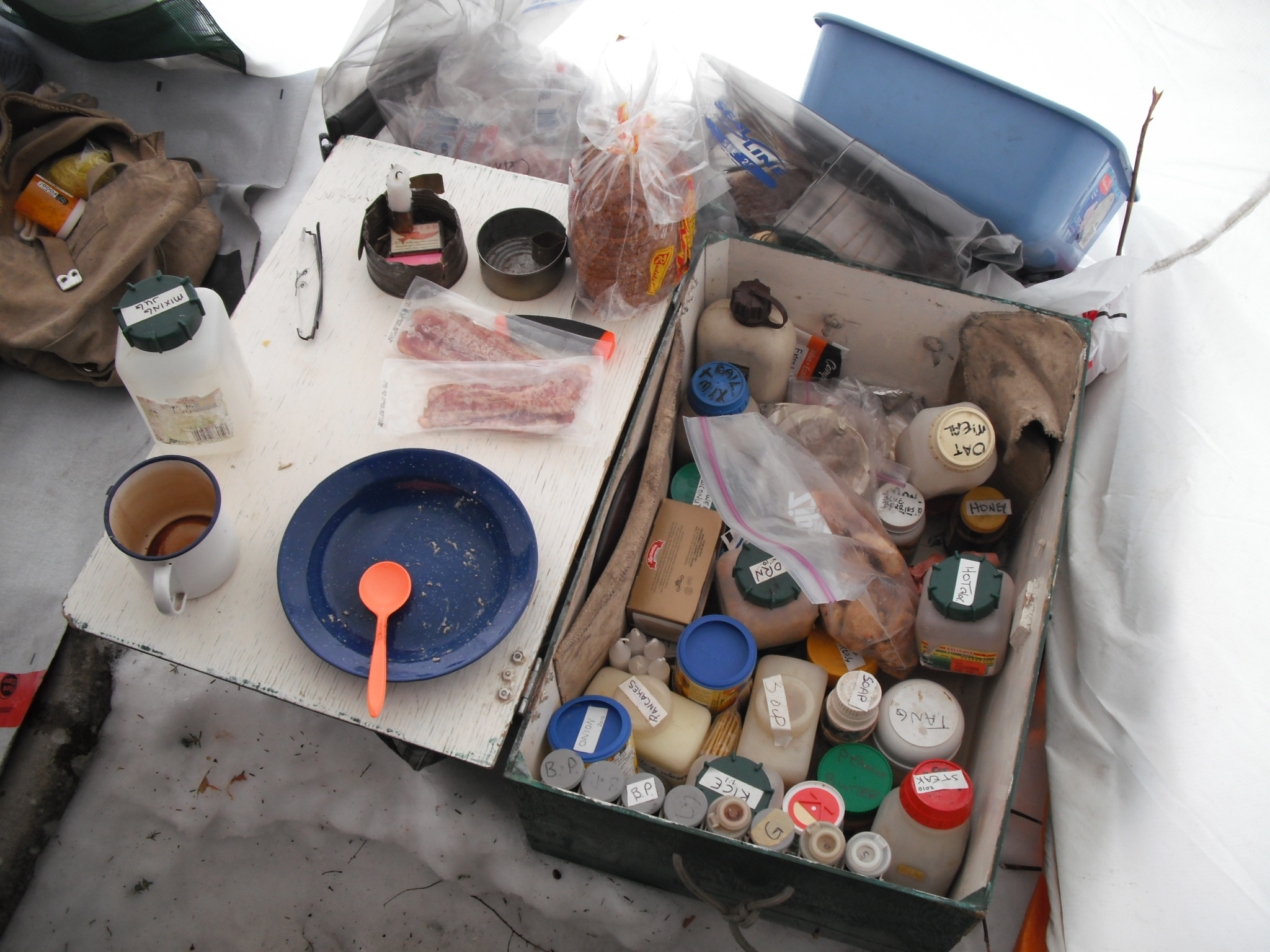
A Grub Box should be three things: 1) lightweight; 2) strong enough to stand on; 3) a table when you open the lid. But, why use one at all? Why not have all your food in a pack?
Well, a canoe-trip or a sled-journey lends itself to transporting one. You have a conveyance. We’re not talking about a hiking-trip or mountaineering.
And the box doesn’t have to weight all that much. The one in the picture weighs 10 lbs including all straps and dividers, and has a volume of 75 liters (24x16x12″). This compares very favorably with a large backpack which typically weighs about 6 lbs (Gregory Denali 75 – $485 MEC). The extra 4 lbs is a penalty, but very much worth it in cooking efficiency. And a wooden box costs a lot less!
NOTE: The grub box shown in these pictures is a veteran of many trips — and looks it, I know 😉
Much of the food you take on a trip is “white-stuff”. When it’s stored in zip-lock bags it all looks the same. Think of it: flour, rice, potato flakes, salt, sugar, baking powder, soup noodles, oatmeal, pancake mix… Who can tell the difference between salt and sugar while rooting around in a dark sack?
Cooking — especially for a group — is made much easier when items are laid out in labelled containers in an open-top box. You can see at a glance what’s where. Meals are produced more quickly, and taste better, because you can find all the condiments. And it’s simple to find lightweight screw-top containers at a dollar-store these days — buy square-sided ones to avoid wasting space in the box.
Having a flat surface available in the bush is a rare and wonderful thing! With the hinged lid on this box, it takes only seconds to arrange one. (You prop it up with a rock, or drive a short stake.) Instant organization! Things don’t topple and spill!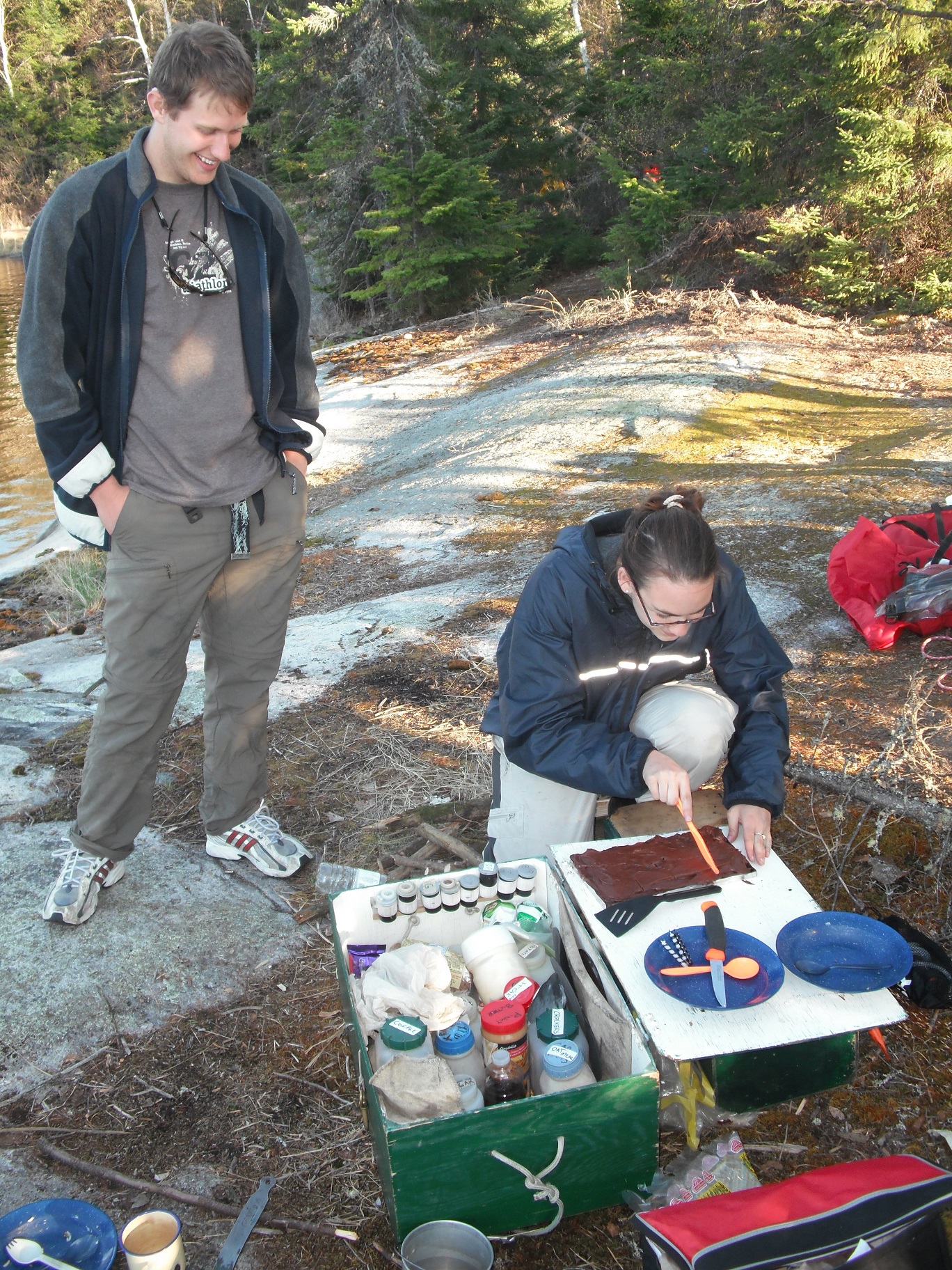
Once you use a grub box it’s sheer utility becomes clear. It’s central to the camp — like a kitchen is central to a home. You bring it on every trip you can.
It looks awkward to portage — in fact, it’s not. You use a head-strap, and the grub box top rests smoothly on your back.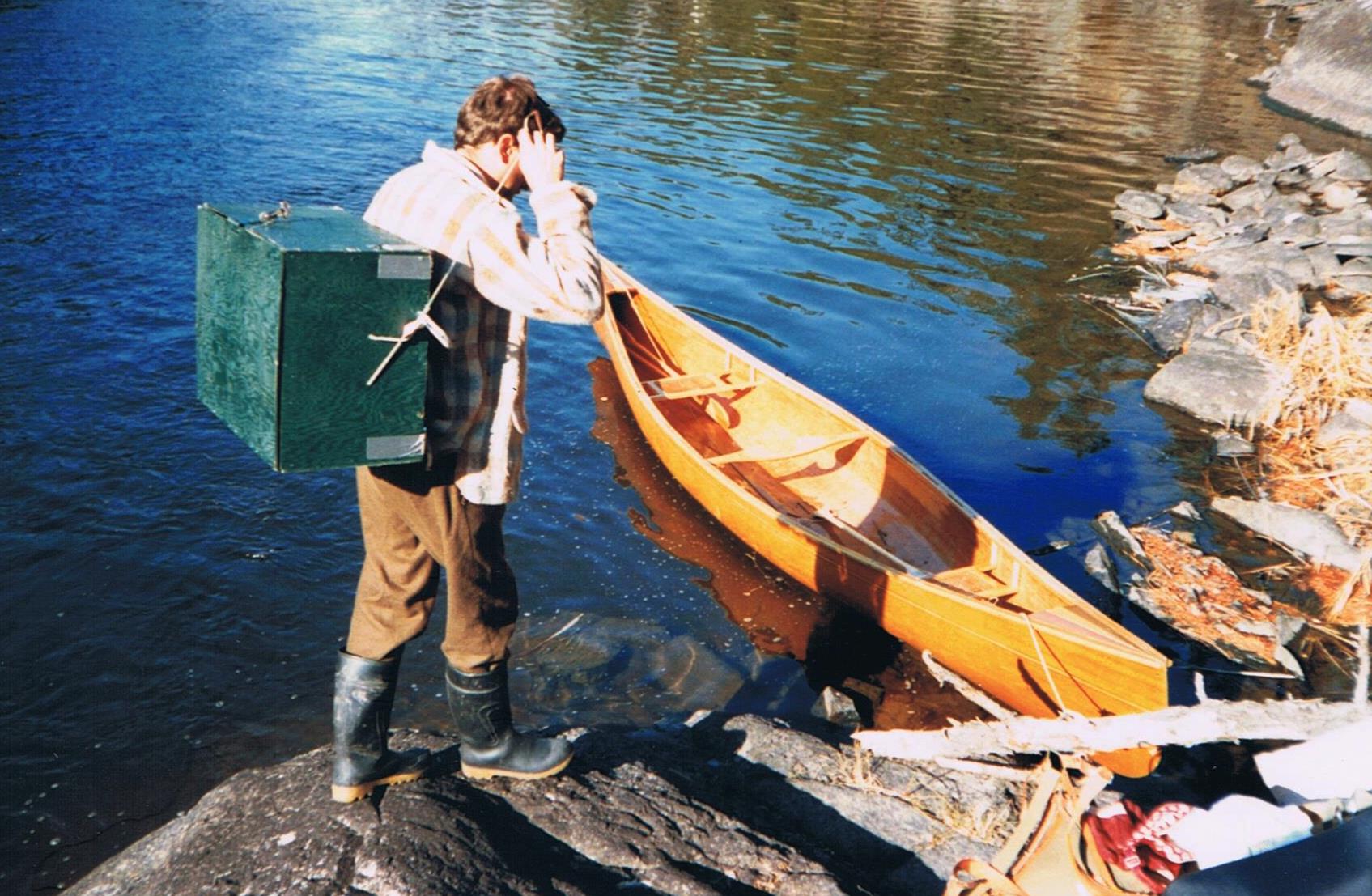
If you get the strap length correct the lower edge of the box rides onto your belt, and much of the weight goes there. On canoe-trips I usually throw a bedding-pack on top of the box during a carry, and if the trail is long and I get tired I just slide that pack off at the halfway point.
Lightweight: Build it like a boat — light and strong. NOT out of 3/4″ lumber. Buy good quality 1/4″ plywood; fir is good. Make sure there are at least 3 laminations of about equal thickness. Don’t use underlayment — it has a thick core with papery veneers and is not strong enough.
Size: it has to fit on your sled, perhaps between the side-rails. (For canoe-travel, same thing, but I like to round the corners to fit the curve of the canoe-hull. The plywood won’t bend. Leave that area open and match the curve with strips of cedar. Staple-epoxy-glass these into place as if you’re building a stripper canoe.)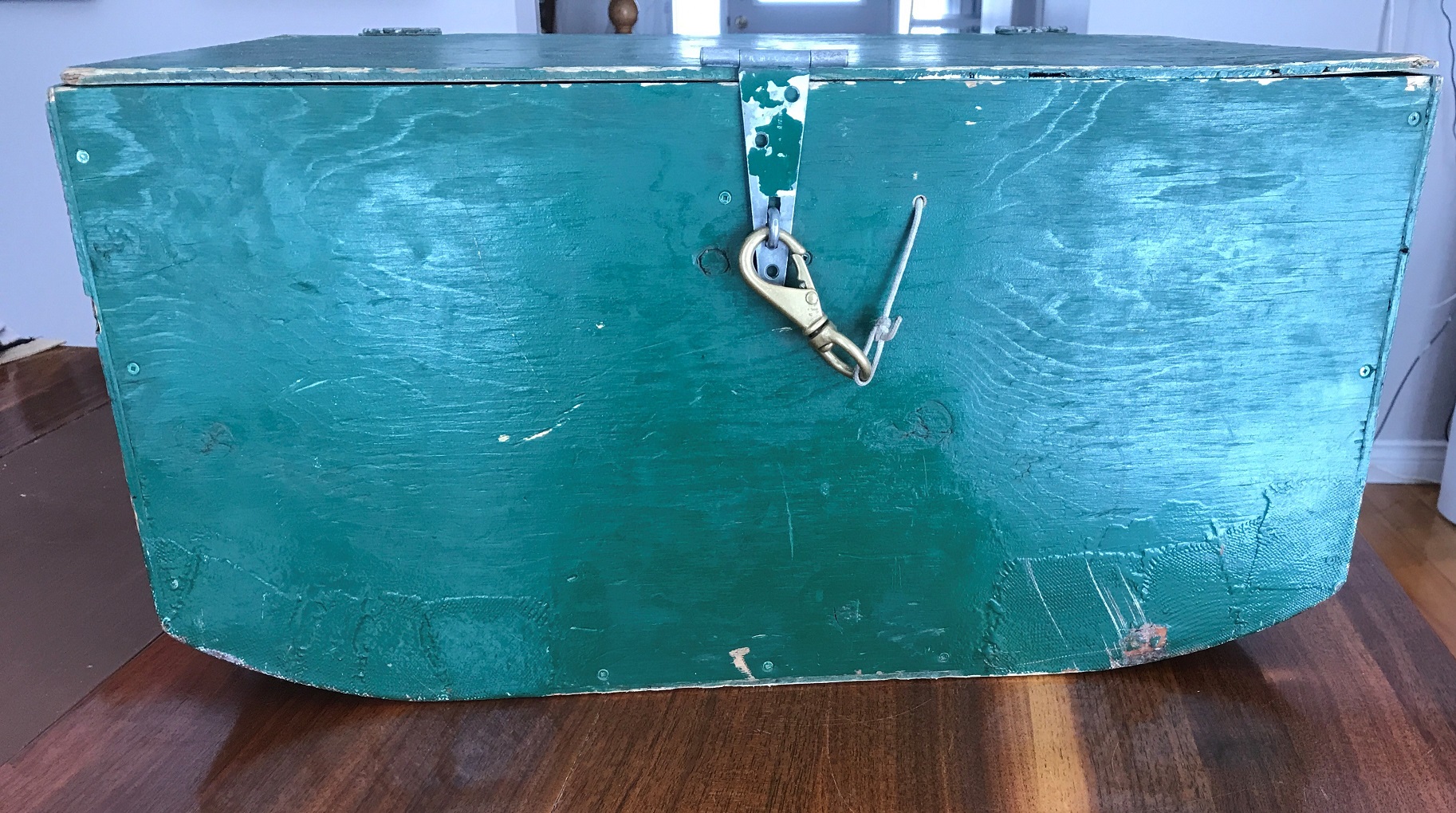
Use gussets to join the sides to the bottom.
Rip a spruce 1″ x 1″ on a table saw and rip it again on a 45. Glue-and-screw these into place. (You can even use a bead of thickened epoxy if you’re a boatbuilder and familiar with that technique.) This is strong, light, cheap, and wastes very little space.
Make the lid large enough to fit over the sides. This keeps more rain out, and allows you to step (carefully) onto the box when getting out of the canoe at a portage, or lashing the wall-tent ridgepole 7ft high on a tree. Use two sturdy hinges, and bolts, not screws. Get a hasp that hinges over the front — this anchors the lid in place.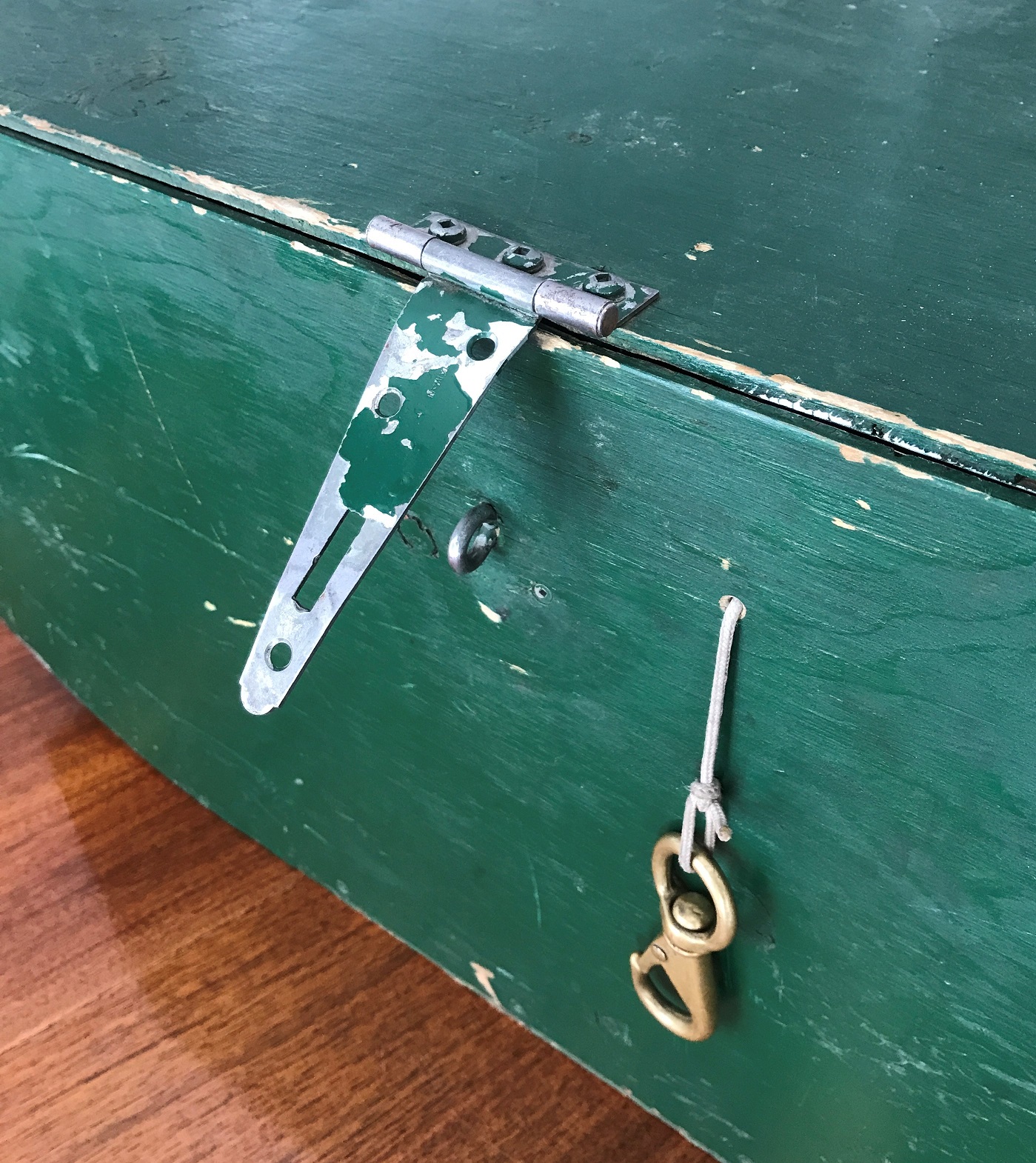
I like a cutlery compartment — I glue-and-staple canvas across one corner, with a velcro lid.
A spice-rack is a handy thing — find whatever small containers suit you, then glue-and-screw a 1/4″x1/4″ strip below them on the box side. To hold the containers in place I use the elastic banding you can buy at a fabric-place, glued and stapled between each container.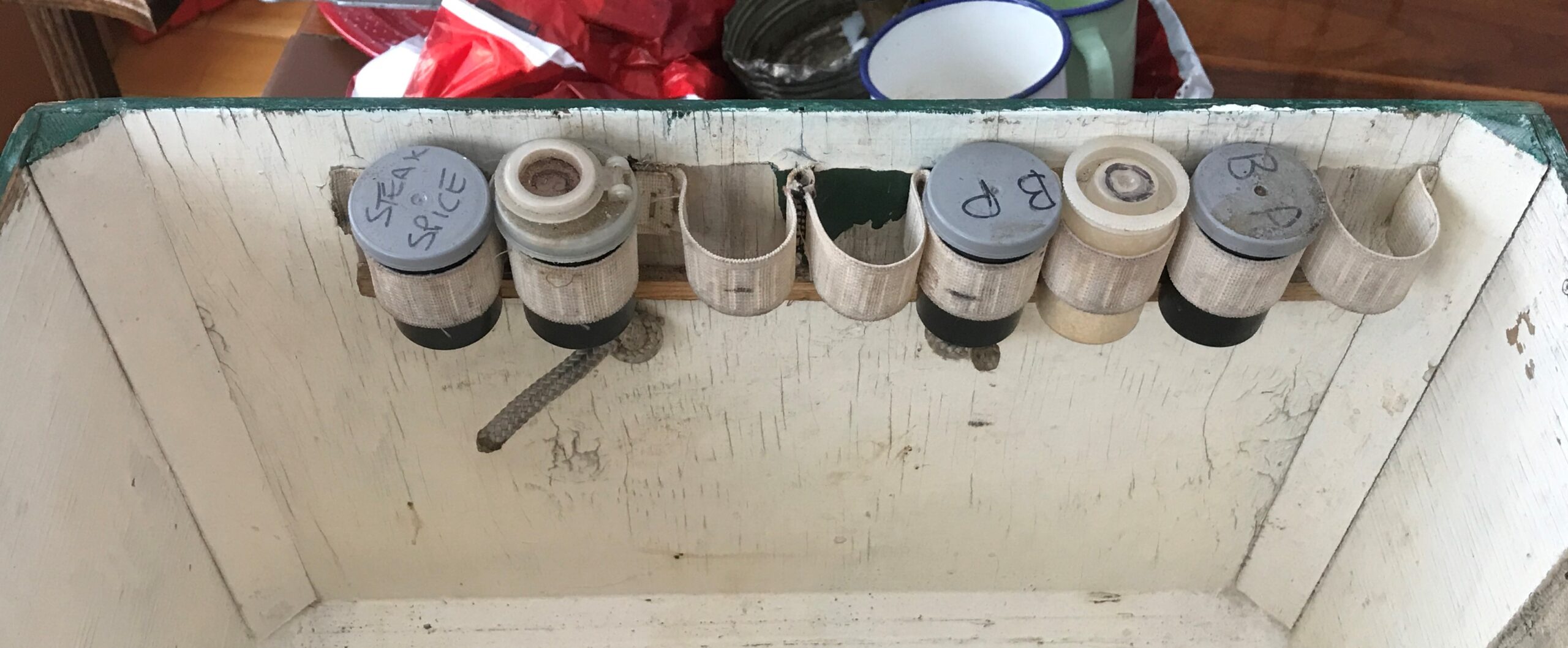
Paint it inside and out — a kitchen enamel on the inside aids cleaning.
Drill holes for rope handles, and attach a headstrap to those. 
Where a grub-box really shines is speed! You can find the ingredients and come up with a tasty meal quickly, and your camp-mates will appreciate this very much!
end
